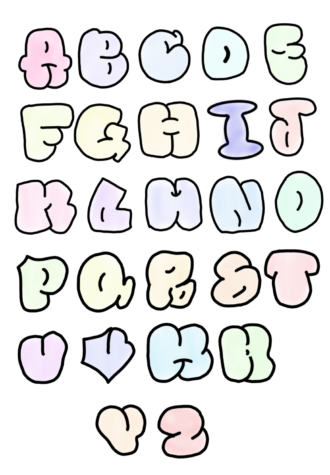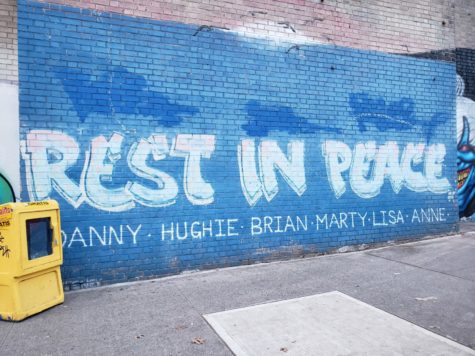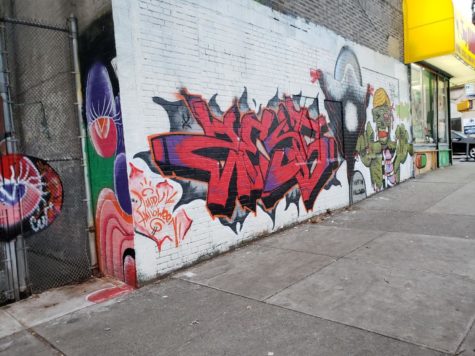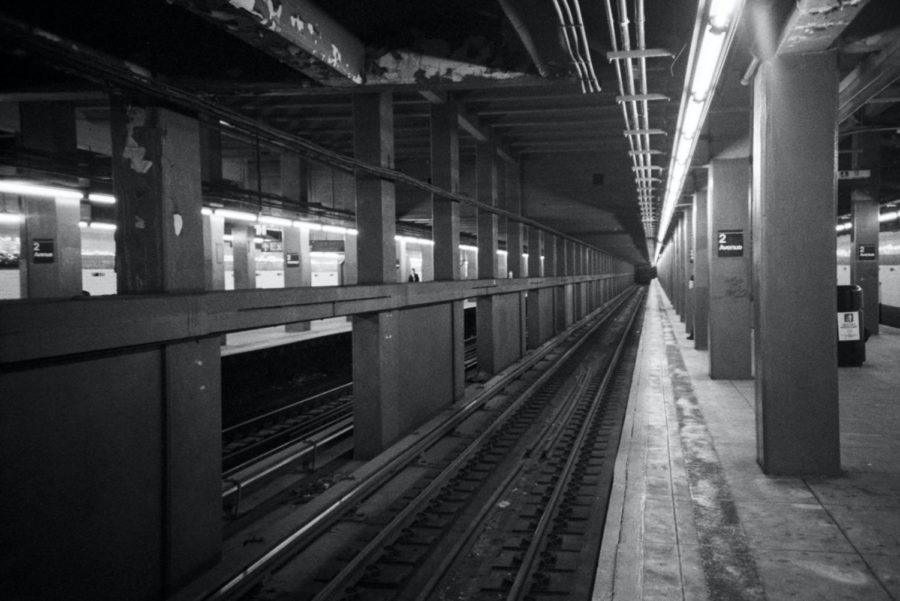The Art of Graffiti in New York City
Graffiti and Street Art culture started in the 1960’s in Philadelphia and is still going strong today.
Although NYC MTA train cars do not have graffiti on them anymore, the tunnels in the subways still do.
New York City. It is one of the biggest tourist destinations in the world. With around 65 million visitors yearly before COVID-19 and about 22 million during the worst of the pandemic, it’s never quiet.
When you first come to New York City, one of the first things that you will notice is the street art and graffiti. Whether you are on the streets of the city that never sleeps or in the underground subway stations, one way or another you are bound to run into big bubble characters or drawings.
To some people, graffiti appears messy and dirty. It has become associated with negative connotations such as gangs and abnormal behavior. Yet, for others , graffiti is the reason the city looks so lively and colorful.
Although New Yorkers are accustomed to these drawings, most other people, primarily tourists, are foreign to the vandalism known as graffiti.
History Of Graffiti
Drawings on walls have always existed, since the earliest origins of humans with cave art. Ancient Greeks and Romans used to write on buildings with messages and names centuries ago.
In the 1960s an artist named ‘Cornbread’ was the start of modern graffiti in Philadelphia. Cornbread started in an attempt to please his crush by tagging “Cornbread loves Cynthia,” using the tag-name ‘Cornbread’ because he loved his grandmother’s cornbread. In the 1970’s graffiti’s presence and influence moved onto the streets of New York with the artist ‘Topcat-126.’
Graffiti began to appear in subway stations and on trains, where big letters of names, numbers, and other characters began to appear. It started out as just signing your name on public property, and known as tags, but over the years it has developed into something much more. In the early days of modern graffiti, tags were commonly used to mark territories for street gangs and were referred to as “writing” by them.

Taki 183 was another of the original New York graffiti writers, and is often considered the father of contemporary graffiti. This title came about because of a New York Times writer who wrote an article about his life . New York City subways have always been a popular place for graffiti, some even saying that the subway cars looked like a plain canvas just ready to be painted on. Although today, train cars with graffiti on them are immediately taken out of service, there are many other places with graffiti, such as the subway tunnels.
Over time, artists introduced new types of graffiti, including throw-up, tag, letters, and characters.
Graffiti became fairly popular by the 1970’s, and by the 1990’s there were numerous attempts to get rid of all the graffiti.
Why do people do it?
Many people do graffiti as a means of expressing their freedom and identity is freedom and expression.
Others also cite boredom for their artwork. Taki 183 started out only because he had nothing better to do. People believe that he stumbled upon a writing of Julio 204, who was one of the earliest graffiti writers in the 1970s, and found inspiration to do the same.
For a lot of graffiti writers, it is the risk that makes it fun. DokeTV is a YouTuber who is well known to have done illegal graffiti. He started out after watching his friends, and continued doing it for fun because of the risk brought with it.
Some people also do it to honor a loved one. Marking a loved one’s name with the words “Rest In Peace” is commonplace in New York graffiti. Something else that is usual, is giving anything that is associated with an angel to a drawing with a name.

However, for many people it is an act of rebellion and protest against society and its norms. Some use it to advocate against racial and sex-based discrimination, spreading awareness about discrimination against their people and culture . But, it is also used in certain instances to promote discrimination.
Graffiti is both used for good and bad. It could be used to spread hate, or it could be used to spread awareness. Graffiti can make an impact, whether it is positive in the way that it helps bring awareness or negative as it can promote racism and hate.
The MTA/NYC In Response
By 1972, Mayor John Lindsay, seeing only massive cleaning costs in graffiti, sought to remove its presence. Over the next few years, he spent millions on graffiti removal.
In 1983, in an attempt to stop graffiti, the MTA painted 25% of subway cars with white paint meant to be graffiti resistant. However, it did not do much to stop the graffiti, but instead gave the graffiti writers more to work with, as it acted like a blank canvas to them.
The following year, the MTA fired back even harder at the graffiti. Tagged trains were put out of service, subways had wired fences, and police brought dogs to assist them in the lookout for graffiti artists.
Many of the MTA’s efforts were unsuccessful until they hired David L. Gunn, who had organized train clean-up efforts in various different cities before coming to New York. Gunn created the Clean Car Program, hiring 2,000 maintenance workers to help enforce cleanliness and safety in the subways. The program aimed to improve the New York City transit system, which included getting rid of graffiti for good. Gunn’s program ultimately worked, and in just three years he cut graffiti crime rates by 85%
The NYCEDC (New York City Economic Development Corporation) started the Graffiti Free New York City Program in 1999. It started out in Brooklyn and moved its way into the other four boroughs due to its success. The program sought to provide free graffiti removal services for whoever may need it.
These efforts worked to reduce the amount of graffiti in both the depths of the New York City subway system and in the small neighborhoods often neglected by the city government. They did not wish to neglect them any longer.

Graffiti Now
Today, doing graffiti remains a criminal offense in most instances . If you are caught doing graffiti without permission, it is punishable by jail time, community service, and/or fines. There aren’t many new pieces of graffiti but many of the old ones still remain. A simple train ride in any underground subway will earn anyone the sight of colorful writing and drawings.
Although illegal, graffiti and street art is one of New York’s greatest tourist attractions and is an essential part of the city landscape and experience.
There aren’t many new pieces of graffiti but many of the old ones still remain. A simple train ride in any underground subway will earn anyone the sight of colorful writing and drawings.
Rida Nuamah is a Managing Editor and Advisory Editor in the Editor-in-Chief division for 'The Science Survey,' and she enjoys writing about arts and entertainment....

